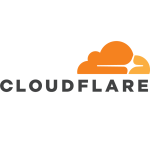What is our primary use case?
Defender for Cloud is a unified platform. Within that, you have Defender for virtual machines, Defender for Servers, Defender for App Services, and Defender for Containers. It is a centralized solution, which you can leverage to bring your security practices in place so centralized security auditing can be done.
You can use it for approximately 90% to 95% of Azure workloads for infrastructure, platform as a service, or database as a service. You can use it for all these.
I am working for a service-based company. We provide Azure Cloud Services. We are a Gold-Certified partner from Microsoft in the GCC region. We are the only ones for whom Microsoft hands over their business.
We mostly use it for public cloud, but it can also be used with hybrid cloud and on-premises. We also use private clouds with government entities.
We have had many customers where we deployed this solution. They are secured and guarded by this solution, so they are happy now.
It can be done as a multi-regional deployment.
How has it helped my organization?
It can be used to secure GCP, AWS, and your on-premise infrastructure. You need a security solution like Defender to secure any type of workload. Your workload may consist of infrastructure, platform, database, or anything in between those. Obviously, you want it to be secure from day one. When you start from anything on the cloud, you want it secured right away. If it is not secured, then you are at risk of a data breach. There are many security issues, which is why it is important to secure your application infrastructure from day one. This is 100% important.
Most customers have an on-premises ITSM solution. If they want P1 or P2 tickets to be initiated, then within Defender for Cloud, it will trigger the ticket or invoke the ITSM solution. Also, they can use SMS- or email-based ticketing. If they don't have anything, then they can utilize the dashboard provided by Defender for Cloud and get everything from one place.
If you don't have this solution then you will be analyzing things with some sort of algorithm or writing some code, then your team will be monitoring emails or some kind of logs every day. When you have commissioned Defender, you have these things visible already on your dashboard. This gives the efficiency to the people to do their actual work rather than bothering about the email, sorting out the email, or looking at it through an ITSM solution, whey they have to look at the description and use cases. Efficiency increases with this optimized, ready-made solution since you don't need to invest in something externally. You can start using the dashboard and auditing capability provided from day one. Thus, you have fewer costs with a more optimized, easier-to-use solution, providing operational efficiency for your team.
Within a SOC team, you monitor tickets and emails, but you cannot automate them unless your company bought some solutions. In the case of Defender, a solution is already provided. You just need to extend it per your needs.
What is most valuable?
All of the features are valuable. When you are designing a solution, you are designing not only the infrastructure but designing the application solution and database. On top of that, you are designing the connectivity solution. Defender takes care of all kinds of security, starting from infrastructure to platform to database. All of them are useful, depending on the workload of different clients.
I work at a service-based company. We use this for almost all our customers. Usually, it will be on your infrastructure, which is a virtual machine and needs an antivirus solution. Then, if you have a platform as a service, you would need OWASP 10 security. All of these are given.
When you commission Defender for Cloud, it provides a portal. The portal has auditing and tracing capabilities. If you want to secure your virtual machines, then you can enable the RDP port by default, if you don't have a security solution. Now, when you are using Defender for Cloud, you can access the machine on an ad-hoc basis through Defender for Server, where you are securing your application. Then, even if someone gets into your account, they still cannot enable RDP.
The portal provides you with auditing and logging capabilities. Along with that, there is a machine learning algorithm. You can even have your own workbook, where you can write in Python, then you can bring it into Defender for Cloud where you can do the injection, verification, and blocking of IPs.
It offers a ready-made solution. In addition, you can enable a customized workbook, which will secure your application. Therefore, you are provided a portal, customer facility, and in-built security from day one and can start using it.
Microsoft works day in, and day out to look for new vulnerabilities happening in the market, which cannot be resolved with human intervention. Every day, they keep searching for vulnerability signatures in the market, then adding those. They automatically get built into Defender for Cloud. For example, there are some vulnerabilities that have been going around. If you are on-premises, then you need to download the signatures out there, then your antivirus software should be capable enough to identify them. With the Microsoft platform, the signature is already provided from Microsoft, i.e., Datastore. This is by default enabled as soon as Microsoft figures it out. This is the first thing that it provides.
What needs improvement?
The solution could extend its capabilities to other cloud providers. Right now, if you want to monitor a virtual machine on another cloud, you can do that. However, this cannot be done with other cloud platform services. I hope once that is available then Defender for Cloud will be a unified solution for all cloud platform services.
For how long have I used the solution?
I have been using it for more than three years.
What do I think about the stability of the solution?
The maintenance part is taken care of by Microsoft. The platform's responsibility lies with Microsoft, not with the customer.
Stability-wise, it is stable.
What do I think about the scalability of the solution?
it can be extended to multiple regions as well as to on-premises.
How are customer service and support?
When upgrading the solution, by default, no technical support is required. If it is required, it will then depend on your SLA, i.e., what kind of agreement you have. You may have an eContract, CSP, open agreement, or a normal one by default. Microsoft uses that SLA to deliver the solution at a particular time.
I would rate the technical support as 6.5 out of 10. In general, you don't need to reach out to Microsoft's support.
How would you rate customer service and support?
Which solution did I use previously and why did I switch?
Before Defender for Cloud, the solution was on-premises or some kind of third-party managed solution that we bought from the Azure portal. This integration had issues because you needed to go through the VPN tunnel, look for your solution, raise a ticket, and then have your teams look at the logs and ticket. If you had some networking issues or a major security issue, your ticket would not be raised.
There have been a couple of customers who start on their own with their own tenants. Then, at a certain time, they figure out that something wrong has happened, e.g., a hacking issue or a security breach. They then come to us through Microsoft because their security appliances and security practices are not proper, asking us, "Can you please help us to secure them?"
The first step is to start securing their virtual machine. So, you enable Defender for Cloud. From the first instance, all their workloads are automatically added and enabled by default. So, if a customer is not secured enough when they go for Defender for Cloud, then it will automatically enable all kinds of security practices for them. Anyone can enable it. You can have Defender as the front face security for your cloud. Because of this, all our clients are secure.
How was the initial setup?
This is a cloud service. It is provided as a platform as a service. So, it is not infrastructure or something which you deploy. No configuration is required by default.
Azure Sentinel is a SIEM solution. Within the SIEM solution, you get logs. On top of that, you receive some kind of tracing. You then have your runbook. So, the integration is very easy. It is just click, click, and click. You can integrate it within five seconds. Azure Sentinel also takes care of Defender. This means that when you go into Azure Sentinel, you say, "I want Azure Sentinel to have whatever logs you have in Defender." Whatever workload is secure, you want to have the auditing part of that in Azure Sentinel, then you want to trigger or invoke something. Therefore, it just takes five to 10 seconds with three clicks, then it is enabled for you.
The external integration component has been provided. You have a ready-made appliance where you download the appliance and install it onto that particular machine, then it will start monitoring your virtual machine. This is easier on the Azure side to integrate. With on-premises, you need to download something called Agent. You download and execute that, then everything is connected. You just provide the security token already shown on your portal, then you integrate.
What was our ROI?
We have seen a 50% reduction in costs.
What's my experience with pricing, setup cost, and licensing?
It is a ready-made solution that you just start using from the day one until whenever you want to use it, paying as you go. Or, you can do either a one-year or three-year RI.
Pricing depends on your workload size, but it is very cheap. If you're talking about virtual machines, it is $5 or something for each machine, which is minimal. If you go for some agent-based solution for every virtual machine, then you need to pay the same thing or more than that. For an on-premises solution like this, we were paying around $30 to $50 based on size. With Defender, Microsoft doesn't bother about the size. You pay based on the number of machines. So, if you have 10 virtual machines, and 10 virtual machines are being monitored, you are paying based on that rather than the size of the virtual machine. Thus, you are paying for the number of units rather than paying for the size of your units.
In case you want your own signatures in-built, you have the workbook where you can enable it to couple with your Defender solution. It will start analyzing your specific algorithm or signature. If there is data specific to your organization or your developer knows something that no one else knows, and you want to restrict that. So, you have a free hand to customize it and a standard way is already provided. Every day, you will get a security update by default. You don't need to bother doing it manually. This has already been given to you free of cost. There are no costs other than the Microsoft workload itself.
Which other solutions did I evaluate?
If you have the solution with Microsoft Azure, then you will not need to look at other products. For on-premises, we were also using F5.
What other advice do I have?
When you are designing the solution, you should activate the solution from day one.
I would rate this solution as 8.5 out of 10.
Which deployment model are you using for this solution?
Public Cloud
If public cloud, private cloud, or hybrid cloud, which cloud provider do you use?
Microsoft Azure
Disclosure: My company has a business relationship with this vendor other than being a customer. Partner


















